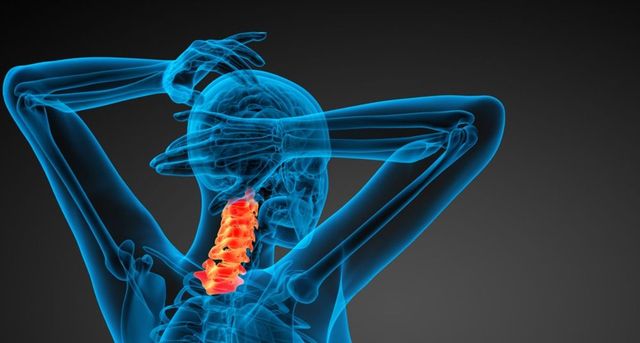Checking Out Spinal Decompression Strategies: What You Need to Know for Better Spine Treatment
Spinal decompression techniques are important for individuals experiencing persistent back discomfort or spinal concerns. These techniques vary from non-invasive treatments to surgical alternatives, each created to eliminate pressure on the spine. Recognizing these strategies is essential for effective spinal column treatment. Not all approaches are appropriate for every problem. The nuances behind each approach warrant better exam, as they can substantially affect recovery and general wellness results. What variables should one think about prior to making a choice?
Understanding Spinal Decompression
Spinal decompression may seem facility, it fundamentally refers to a range of techniques aimed at easing stress on the spinal cord and surrounding nerves. The back is a vital framework that supports the body and secures essential neurological pathways. When compression occurs, it can lead to pain, pain, and lowered movement. Understanding spinal decompression involves recognizing the reasons for this stress, such as herniated discs, spinal stenosis, or injury. By attending to these underlying issues, decompression techniques look for to recover correct positioning and function. This process can include both surgical and non-surgical techniques, tailored to private person demands. The objective is to improve the high quality of life by soothing discomfort, enhancing position, and helping with far better activity. As recognition of spinal health grows, the relevance of comprehending spinal decompression comes to be significantly pertinent for those looking for reliable therapy choices
Common Spinal Decompression Techniques
Spinal decompression strategies include a range of techniques created to ease stress on the spinal column and its involved structures. These methods can be broadly classified right into surgical and non-surgical methods. Non-surgical approaches include spinal traction, where mild pulling forces are put on the spine, developing space in between vertebrae. This can alleviate nerve compression and advertise healing. Chiropractic changes additionally fall under this category, concentrating on realigning the spine to boost feature.
Surgical decompression strategies include procedures such as laminectomy, where a part of the vertebra is removed to eliminate stress on the spine or nerves. Discectomy, another surgical alternative, entails the elimination of herniated disc product. Furthermore, minimally intrusive methods, like endoscopic discectomy, are acquiring popularity because of their reduced healing times. Each technique offers a certain objective and may be chosen based upon private client requirements and the severity of their spinal condition.
Benefits of Spinal Decompression
When taking into consideration the different approaches to taking care of spinal issues, the advantages of spinal decompression methods come to be obvious. These approaches aim to soothe stress on the spinal discs and nerves, which can ease discomfort and enhance general spinal wellness. By developing space between vertebrae, decompression advertises boosted blood flow and nutrient flow to the impacted locations, facilitating healing and recuperation.
Additionally, spinal decompression can aid restore the all-natural placement of the spine, potentially decreasing the risk of future injuries. Patients commonly report increased flexibility and flexibility following treatment, resulting in an enhanced lifestyle. Additionally, the decrease in stress can decrease signs and symptoms linked with conditions such as herniated discs, sciatic nerve pain, and spinal constriction, providing a non-invasive option to more invasive treatments. In general, spinal decompression methods give a variety of physical and restorative benefits, making them an important element of considerable back treatment.

That Can Take Advantage Of Spinal Decompression?
Individuals experiencing persistent neck and back pain, herniated discs, or spinal constriction may find substantial alleviation through spinal decompression strategies. This non-invasive treatment can be particularly valuable for those experiencing nerve compression signs and symptoms, such as tingling, numbness, or weak point in the limbs. Professional athletes recuperating from injuries or individuals with degenerative disc condition may likewise consider spinal decompression as Extra resources a viable choice for pain More Help administration and improved flexibility.
Additionally, prospects for spinal decompression typically consist of those who have not responded well to traditional therapies, such as medications or physical therapy. It can additionally function as a choice for clients looking for to avoid surgical treatment. Overall, spinal decompression methods can offer a healing option for different people encountering spinal problems, assisting them regain a greater quality of life and practical capacity. Consulting a health care expert is necessary to establish the suitability of this treatment for certain problems.
Factors to consider and Precautions for Spinal Decompression

The sort of spinal decompression strategy-- whether non-surgical or surgical-- should align with the person's certain condition and total health and wellness condition. Monitoring throughout the treatment is crucial to deal with any negative responses immediately. Clients should also comprehend that spinal decompression is not a one-size-fits-all solution; a comprehensive treatment strategy may consist of physical therapy or way of living adjustments to sustain recuperation. In general, sticking to these safety measures can greatly boost the efficacy of spinal decompression treatments and promote suitable spinal column wellness.

Regularly Asked Questions
The length of time Does a Regular Spinal Decompression Session Last?
A normal spinal decompression session lasts between 30 to 45 minutes. This duration permits optimal treatment while making certain the client remains comfortable and obtains appropriate focus to their particular spinal problems and requirements.
Can Spinal Decompression Be Done in your home?
Spinal decompression can be done at home through details exercises and tools, such as inversion tables or lumbar braces. Assessment with a health care professional is advised to guarantee safety and security and performance in individual cases.
Is Spinal Decompression Painful?
Spinal decompression is generally not unpleasant; nevertheless, individuals may experience mild pain or stress throughout the treatment. Pain levels can vary based on the person's condition and the method used for decompression.
The Amount Of Procedure Are Typically Needed for Relief?
Generally, individuals might require 6 to 10 sessions of spinal decompression treatment to experience considerable relief (Spinal Decompression). The exact number can vary based on private problems and actions to therapy, demanding customized assessment by medical care experts.
Are There Any Kind Of Age Restrictions for Spinal Decompression?
There are usually no stringent age limitations for spinal decompression therapy. Suitability might depend on individual health and wellness problems and the details technique made use of, so click here now examination with a health care professional is advised for customized recommendations.
Spinal decompression strategies are important for individuals experiencing persistent back pain or spinal concerns. Spinal decompression might sound complex, it fundamentally refers to a variety of techniques intended at relieving stress on the spinal cable and surrounding nerves. When taking into consideration the different techniques to handling spinal problems, the benefits of spinal decompression techniques become apparent. Individuals enduring from persistent back pain, herniated discs, or spinal stenosis might locate substantial alleviation via spinal decompression strategies. On the whole, spinal decompression methods can give a therapeutic alternative for various individuals facing spinal concerns, aiding them gain back a higher quality of life and useful capability.